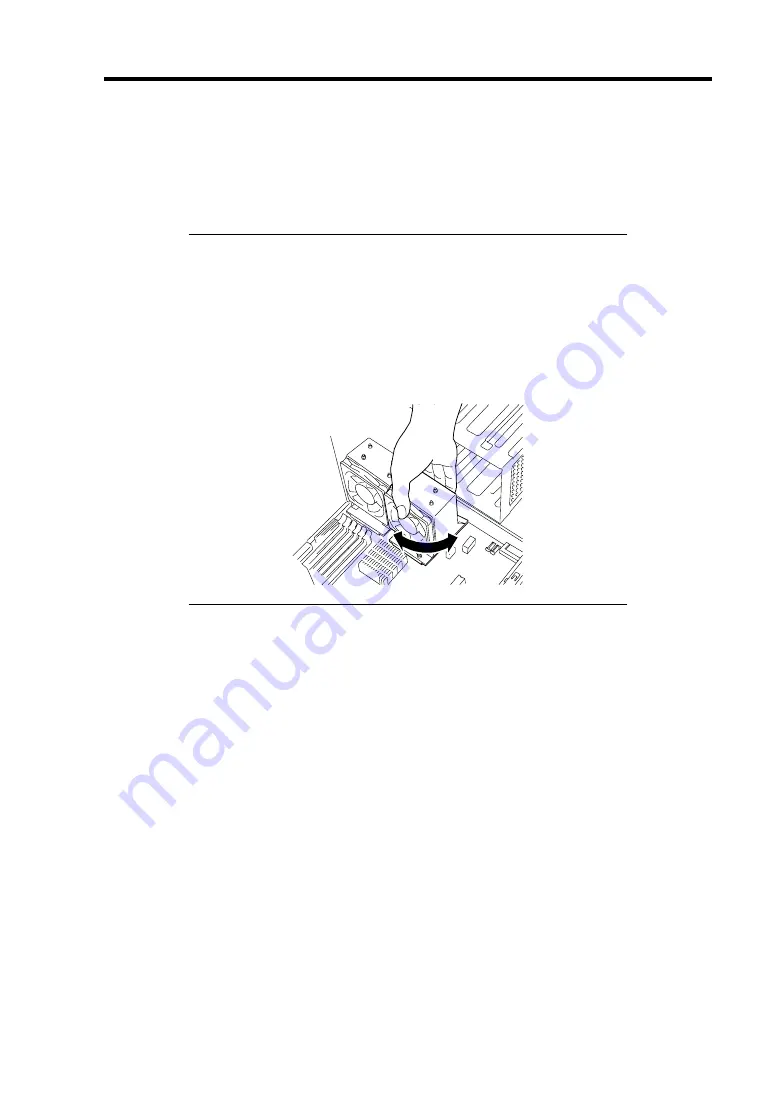
Upgrading Your Server 9-47
Removal
To remove the CPU, prepare for removal referring to steps 1 and 3 in the installation procedure and
do the reverse procedure of steps 11 to 4. To remove the heat sink, first remove the screw, and
slightly move the heat sink at a level, then remove the heat sink.
IMPORTANT:
Do not remove any CPU unless it is failed.
After the operation, heat may make the cool seat at the bottom of
the heat sink adhere to the CPU. To remove the heat sink from the
CPU, first turn the heat sink to the left and right lightly to make sure
that the heat sink can be apart from the CPU. Removing the heat
sink with it adhering to the CPU may cause the CPU and/or socket
to be damaged.
Do the following procedure if a CPU is removed (or replaced).
1.
Start SETUP to select menus [Main] – [Processor Settings] – [Processor Retest] in the
order to clear the error information on the removed CPU (see Chapter 4).
When a CPU is replaced, select menus [Main] – [Processor Settings] to confirm that the
ID and L2 Cache Size of the additional CPU are defined normally (see Chapter 4).
2.
Set [Reset Configuration Data] on the Advanced menu to [Yes].
This is required to update the hardware configuration information. See Chapter 4 for
details.
Summary of Contents for Express 5800/120Eh N8100 SERIES
Page 16: ...x This page is intentionally left blank...
Page 32: ...2 4 General Description SATA Model 1 Additional slot 1 2 3 4 5 6 10 9 7 8 Additional slot 2 11...
Page 36: ...2 8 General Description Internal View SAS Model 1 2 4 5 1 6 7 8 3 2 3 1 5 2 10 9...
Page 52: ...2 24 General Description This page is intentionally left blank...
Page 112: ...4 48 Configuring Your Server This page is intentionally left blank...
Page 176: ...7 12 Maintenance This page is intentionally left blank...
Page 338: ...E 24 Installing Windows Server 2003 This page is intentionally left blank...
Page 342: ...F 4 Product Configuration Record Table This page is intentionally left blank...






























